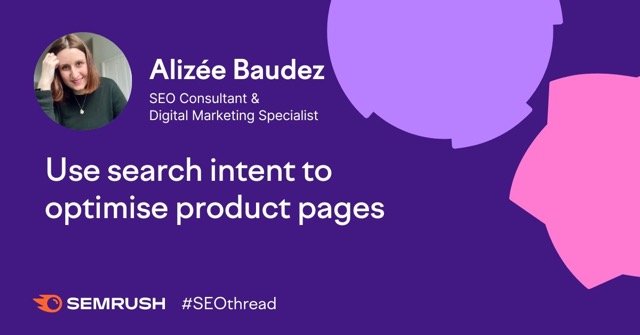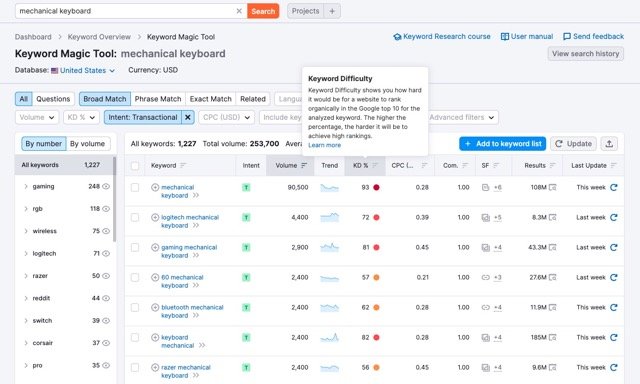Twitter takeover: Use Search Intent to Optimise Product Pages - Semrush #SEOThread
The Semrush team got in touch with me a few weeks ago to do a #SEOThread on their Twitter account. I chose to write about using search intent to optimise product pages for e-commerce. You can read the whole thread below. ↓
Hello SEO friends! 👋 I'm Alizée, a freelance SEO consultant with a passion for specialty coffee and knitting.
— Semrush (@semrush) June 14, 2022
I'll be taking over the #SEOthread today to talk about using #searchintent to optimise product pages 🤓
So get cozy, grab a notepad, and read on! 😉↓ @AlizeeBaudez pic.twitter.com/w7iyHbK6X2
In a nutshell, here are the few elements I mentioned in this #SEOThread.
What is Search intent?
First things first, search intent is the purpose of a user’s search.
— Semrush (@semrush) June 14, 2022
There are 4 type of search intent:
→ Navigational = find something or a website
→ Informational = research
→ Commercial = compare options
→ Transactional = buy, complete an action#SEOthread @AlizeeBaudez pic.twitter.com/l25vgdiJxB
In a way, informational, commercial and transactional search intents coincide with the buyer’s journey. The general idea here is that you want to take your user through each step of the journey with the content you put on your website.
Where does the product page fit?
The product page can be visited by the user at any stage of the process (=any stage of the buyer’s journey). But at the end of the day, its goal is to sell. So you want to optimise your product page for the decision stage, with keywords that have a transactional search intent.
How to optimise your product page for transactional queries?
How to optimise your product page for transactional queries?
— Semrush (@semrush) June 14, 2022
1️⃣ Check out what queries the page is already ranking for on Google Search Console
2️⃣ Extend your keyword research to transactional queries
3️⃣ Implement optimisations#SEOthread @AlizeeBaudez
1 - On Google Search Console
Look at the keywords that drive traffic to your product page. Read through them carefully. Can you already spot what type of search intent is emerging from those keywords?
Export the keyword and define a search intent for each of them. You can use a spreadsheet or a keyword analysis tool.
How to easily spot a transactional keyword?
— Semrush (@semrush) June 14, 2022
Look out for the words “buy”, “for sale”, “price”, “cost”, “supplier”, “quote”, etc.#SEOthread @AlizeeBaudez pic.twitter.com/19YyEwRE9V
2 - Extend your keyword research to transactional queries
Now you have deciphered what brings your users to your product page, it's time to adjust and broaden your horizons! We'll do this by doing a bit of keyword research, just to make sure what we're changing is in line with what our users need.
I often use the Semrush Keyword Magic Tool to find related queries and filter the results by search intent, keeping only the transactional ones.
— Semrush (@semrush) June 14, 2022
Pick a few of the best ones according to your usual keyword research criteria.#SEOthread @AlizeeBaudez pic.twitter.com/9ogMu9yiTl
3 - Implement your transactional keywords where it matters the most
Make sure the keywords you end up with are in the page title, the meta description, the headings of the page. Include them in bold in your paragraphs, optimise your copy in the best way possible.
Extra elements to consider on your product page
💡 Extra elements to consider on your product page:
— Semrush (@semrush) June 14, 2022
→ Have a clear CTA for your product
→ Keep the page design simple and effective
→ Go to the point in your copy
→ Include reassurance elements (reviews, payment options, delivery, use cases...)#SEOthread @AlizeeBaudez
If you need any help with your product page, your e-commerce website, or if you want to optimise your keywords for the right search intent, get in touch with me today!



